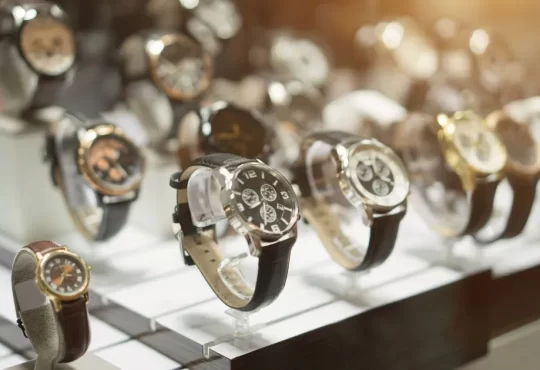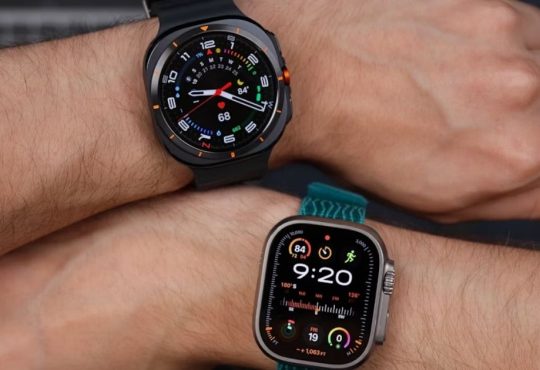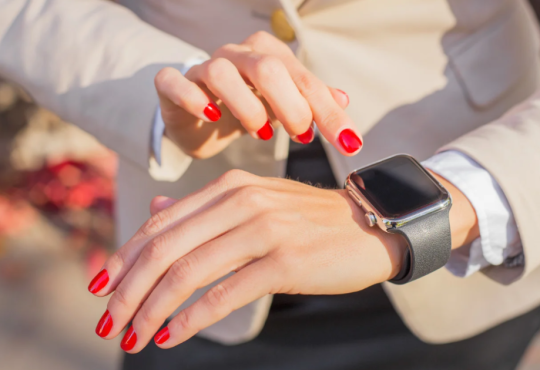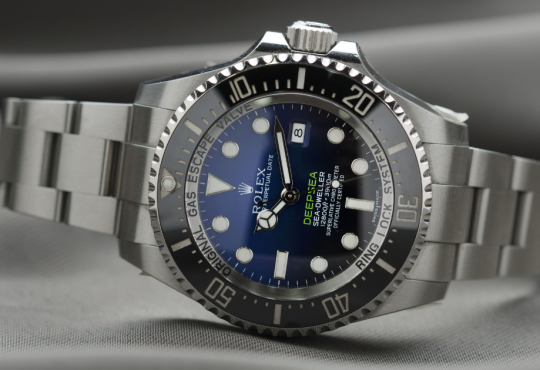A watch isn’t just a way to keep time—it’s a reflection of your style, a daily companion, and a tool that helps you stay on track. With so many designs, features, and price ranges available, choosing the right one can be overwhelming. Whether you’re searching for a bold statement piece, a rugged everyday essential, or a smartwatch that syncs seamlessly with your life, the key is matching your choice to your lifestyle and budget.
This watch guide breaks it all down, helping you find the perfect timepiece without overspending or second-guessing your pick.
5 Watch Guide: Find Your Style Within Budget
1. Start with Your Lifestyle
Before looking at colors, materials, or price tags, think about how the watch will be used day to day.
For the Office or Formal Events
When it comes to business attire or dressier occasions, a refined timepiece adds polish without overpowering the look. Classic dress watches are characterized by their simplicity and elegance—typically featuring clean, uncluttered dials, slim profiles that slide easily under a cuff, and traditional elements like Roman numerals or subtle indices. Leather straps in black or brown remain timeless choices, while brushed or polished stainless steel bracelets offer a sleek, modern touch.
Top brands like Seiko, Citizen, and Tissot deliver outstanding value in this category, offering automatic or quartz movements wrapped in stylish, well-finished cases. These watches give the appearance of high-end luxury without demanding a hefty investment. Whether it’s for daily office wear or special events like weddings and galas, a classic dress watch sends the message of sophistication and attention to detail.
For Outdoor Adventures
Adventure-ready watches are built with one thing in mind—survival. Whether it’s navigating dense forests, braving rocky terrains, or getting caught in the rain mid-hike, these timepieces are engineered for durability and function. Rugged materials like resin, reinforced stainless steel, and shock-absorbing construction protect against bumps, drops, and scrapes. Water resistance is essential, with many models capable of handling depths of 100 meters or more.
Additional features like compasses, barometers, altimeters, and GPS tracking can be game-changers for outdoor explorers. Brands like Casio G-Shock and Garmin Instinct lead the charge in this space, offering shockproof builds, tactical features, and long battery life—all at prices that won’t make your wallet sweat. These watches are trusted by military personnel, survivalists, and weekend adventurers alike, proving that durability and practicality can still look bold on the wrist.
For Everyday Casual Wear
A casual lifestyle calls for a watch that’s relaxed, versatile, and easy to wear. Simple analog designs, sleek digital models, or rugged field watches are ideal options that blend effortlessly into daily routines. These timepieces are designed to complement laid-back outfits while still offering practical features like date displays, backlighting, or water resistance. They’re perfect for everything from coffee runs to weekend getaways, offering the right mix of form and function without being overly formal or flashy.
Brands such as Timex, MVMT, and Fossil offer a wide range of casual watches that strike the balance between style and affordability. Many of these models feature interchangeable straps, minimalist dials, or vintage-inspired details, making them suitable for a variety of looks and occasions. Their designs cater to everyday comfort, ensuring that the watch feels natural on the wrist no matter the setting.
For Fitness and Tech-Savvy Users
Modern smartwatches are no longer just for tracking steps—they now serve as comprehensive wellness companions and productivity tools. These devices monitor heart rate, track workouts, measure sleep quality, and even deliver GPS navigation for outdoor runs or cycling. Many also sync seamlessly with smartphones to provide notifications, manage calendars, control music, and answer calls—all from the wrist.
Popular models from Apple, Samsung, and Fitbit offer different feature sets and price ranges to suit various needs. While some prioritize advanced health monitoring, others focus on streamlined connectivity and battery efficiency. Choosing the right model depends on daily habits—it’s important to consider which functions will actually be used regularly to avoid overpaying for unnecessary extras.
2. Set a Realistic Budget
Watches come in a huge range of price points—from $20 basics to five-figure luxury pieces. Thankfully, a great watch doesn’t have to cost a fortune.
- Under $100: Expect solid quartz movements, durable resin or leather bands, and basic features. Great for first-time buyers or functional fashion.
- $100–$300: Opens up more refined materials, automatic movements, and enhanced features. Think sapphire crystals, stainless steel cases, and sleek design upgrades.
- $300–$1,000: A sweet spot for enthusiasts. Offers everything from Swiss-made watches to boutique automatic models with heritage appeal.
- $1,000 and up: Where prestige, craftsmanship, and collectible value really shine. Think Omega, Tag Heuer, or entry-level Rolex—watches that often double as investment pieces.
Pro Tip: Don’t be afraid to shop pre-owned or explore microbrands. Platforms like Chrono24, Jomashop, or even eBay (if you’re careful) can unlock major savings.
3. Know the Movement: Quartz vs. Automatic vs. Smart
The movement is the heartbeat of your watch—and one of the biggest factors in price and performance.
Quartz
A small battery powers quartz watches and uses a quartz crystal to keep time, offering exceptional accuracy and low-maintenance reliability. These are some of the most budget-friendly options on the market, making them an ideal choice for everyday wear or first-time watch buyers. They require very little upkeep—usually just a battery change every couple of years—and maintain time with impressive precision. With a wide range of styles available, quartz watches are a practical solution for those who prioritize convenience and affordability.
Automatic (Mechanical)
Automatic watches run without batteries, using the natural motion of the wearer’s wrist to wind the internal mechanism. Often considered a favorite among collectors and enthusiasts, these watches offer a more traditional, handcrafted experience. They tend to be more expensive due to their intricate engineering and craftsmanship, and they may require occasional maintenance or servicing to keep them running smoothly over the years. Many feature exhibition casebacks that showcase the mechanical movement, adding a sense of artistry and sophistication.
Smartwatch
Smartwatches are the most tech-forward option, packed with digital features that go far beyond timekeeping. Designed to pair with smartphones, they offer real-time notifications, fitness tracking, GPS navigation, music control, and more. Some models even support mobile payments and phone calls. These watches do need regular charging—typically every one to three days, depending on usage—but the added functionality makes them ideal for busy, connected lifestyles. Perfect for fitness enthusiasts, multitaskers, or anyone who wants more than just a clock on their wrist.
The choice ultimately comes down to individual priorities. Quartz offers hassle-free simplicity and accuracy, making it ideal for low-maintenance wear. Automatic movements appeal to those who appreciate mechanical craftsmanship and traditional watchmaking. For those who value tech integration and real-time features, a smartwatch provides the most functionality.
4. Choose the Right Style and Size
A well-chosen watch enhances an overall look by blending seamlessly with personal style and wrist size, rather than drawing attention for the wrong reasons. It should feel balanced, proportionate, and in harmony with both the wearer’s frame and wardrobe.
Dial Size
Watch dial size impacts both style and comfort, with proper proportions ensuring a balanced, wearable fit. A properly sized dial provides the watch looks balanced on the wrist, contributing to visual harmony and a comfortable fit throughout the day. For most wrists, a dial size between 38–42mm offers a balanced, classic appearance that’s neither too large nor too small. Those with larger wrists may gravitate toward oversized styles (44mm and above), which tend to have a bolder, more statement-making presence. However, oversized watches can overwhelm smaller wrists and feel bulky over time, so it’s important to choose a size that complements the wrist’s proportions for both aesthetic and comfort.
Strap Material
The watch strap not only affects the visual style but also impacts the feel and functionality of the watch. Leather straps are known for their timeless elegance and are well-suited for formal or professional settings. Metal bands—especially stainless steel or titanium—add durability and a substantial presence on the wrist, making them ideal for both business and casual wear. For a more relaxed or active lifestyle, nylon and silicone straps offer a lightweight, breathable, and sporty alternative, often available in various colors and patterns to match personal style.
Colors
Color choice is another important element that can either blend in or stand out. Neutral tones like black, silver, navy, and tan are versatile and timeless, easily matching most wardrobes and occasions. These hues are safe bets for everyday use or professional settings. On the other hand, watches with bold colors—such as red, green, or even neon accents—can serve as standout accessories that inject personality and flair into an outfit. Choosing the right color depends on how the watch is intended to function: as a subtle timepiece or a fashion-forward statement.
Still not sure? Start with a clean, minimalist design in neutral tones. It’ll pair with everything from business attire to a hoodie.
5. Consider Long-Term Value
Watches can serve different purposes—some are everyday accessories, others are treasured keepsakes passed down through generations. Before making a purchase, it’s important to consider whether the watch is meant for short-term style or long-term significance. For those who view watches as collectibles or investments, brand reputation, craftsmanship, and materials are critical factors. A timepiece with timeless design, a reliable movement, and strong brand heritage is more likely to retain value or even appreciate over time.
For long-lasting durability, prioritize features like scratch-resistant sapphire crystal, which protects the face from everyday wear, and stainless steel or titanium cases, known for their strength and resistance to corrosion. Movements from reputable makers, such as the Seiko NH35 or Swiss ETA, offer proven accuracy and reliability—key for both performance and future servicing. If resale or heirloom potential is a factor, classic models from well-known brands like Omega, Rolex, or Tag Heuer tend to hold their value better than trendy or overly niche options. Ultimately, choosing a watch with staying power ensures it will remain relevant and reliable for years—or even decades—to come.
The Perfect Timepiece Awaits—Style Meets Purpose
Finding the right watch isn’t about following trends—it’s about matching function with personality and budget. Whether it’s a rugged field watch for mountain treks or a sleek timepiece for boardroom meetings, there’s a perfect option out there. A good watch should feel like an extension of your lifestyle—whether that means tracking your heart rate or just keeping you stylishly on time.
Time to watch the savings—and the compliments—roll in.





